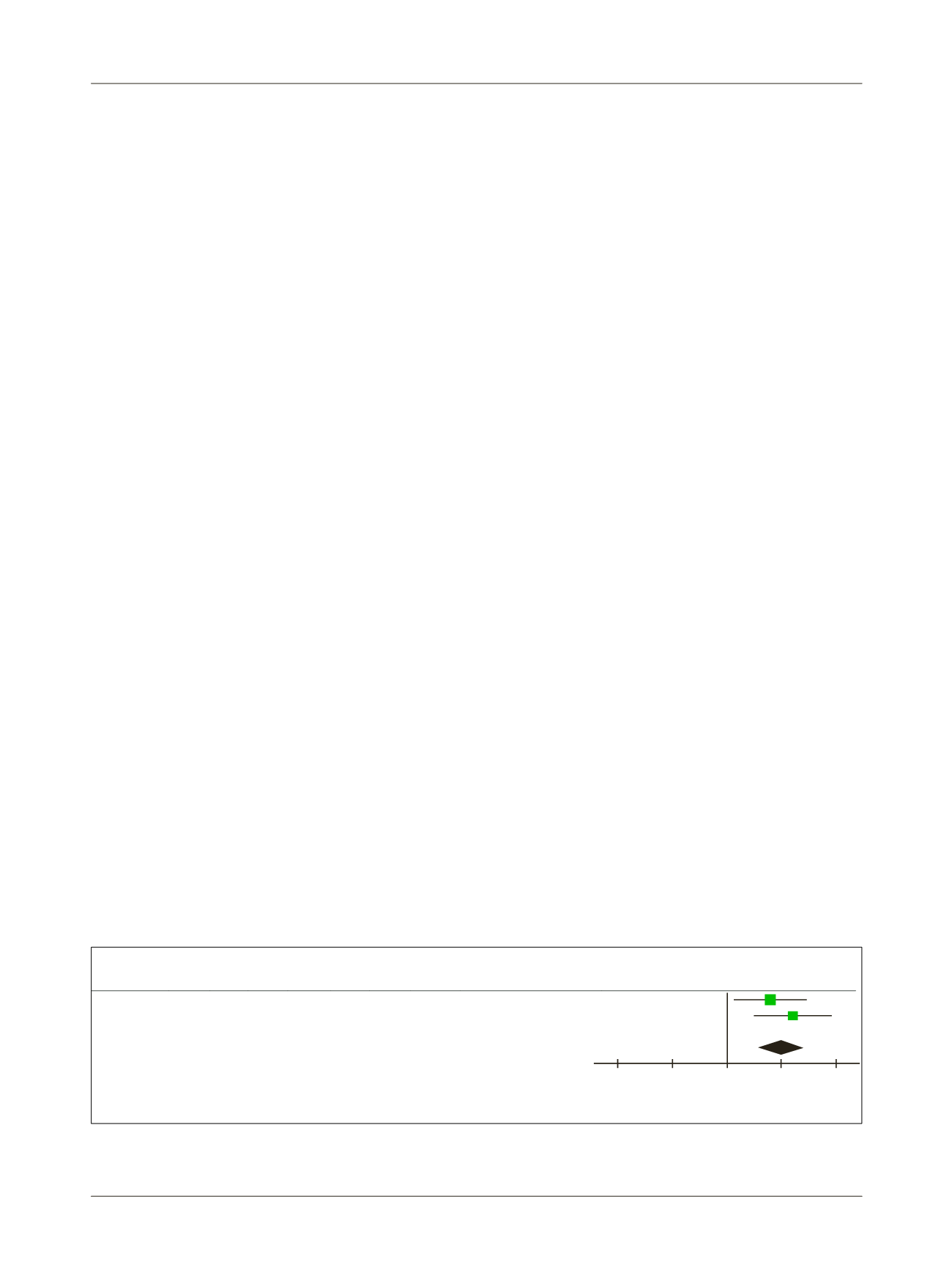

E
spíndula
RC
et
al
.
1010
R
ev
A
ssoc
M
ed
B
ras
2017; 63(11):1006-1011
[SMD] 0.99 [95CI 0.51-1.47]; Chi² test 0.71; df=1; p<0.001;
I² statistic 0% for functional capacity). Figure 3 presents
the forest plot with comparison of pilates x home-based
exercise for functional capacity.
D
iscussion
Breast cancer is a chronic degenerative disease with sig-
nificant global public health importance for women.
6
The
risk factors are well known and improving lifestyle may
be a protective factor and reduce the risk of developing
the disease.
4,5,10,21
This is the first systematic review and
meta-analysis to specifically investigate and compare the
practice of pilates with no exercise and with other exer-
cises for women with breast cancer.
Overall, our results demonstrate that pilates or home-
based exercises are better than no-exercise in each individ-
ual study. Considering the pooled data for two studies, a
meta-analysis was conducted only for the outcome of func-
tional capacity, thus we observed significant improvements
in the pilates group compared to home-based exercises. This
result was expected: since pilates had a professional moni-
toring the performance of every exercise, the women had
an extra motivation to take pilates training, and had com-
pany to exercise. Additionally, in the individual studies we
observed improvements in range of motion, pain and fatigue.
There is a systematic review about the methods used
in pilates for women’s health published in 2015.
17
Con-
sidering pilates and breast cancer, the authors included
only two studies. In our systematic review, we found three
more RCTs in the literature, and so we can consider it an
update of the evidence. We were also able to conduct a
meta-analysis on functional capacity. There is growing
interest in the topic and new studies are being conducted.
Considering the quality of the studies, improvements
are necessary, to perform randomization and allocation
concealment, not only in the conduction of the study, but
also better described in the study. Due to the type of in-
tervention, blinding was not possible; however, outcome
assessors could have been blinded in the studies. Incom-
plete outcome data was another problem found, with
some studies presenting high loss at follow-up.
As for risk of bias assessment, imprecision, inconsis-
tency, indirectness and publication bias, we were able to
categorize the evidence based on the GRADE score as low
quality. This means that the evidence organized is this
systematic review is “very likely that further research would
change our estimate of effect or our confidence in it.”
The limitations of our research rely on the fact that
different protocols of pilates exercises and home-based
exercises were used across studies. Heterogeneity was
tested but not found across studies. A strong factor is
that our review considered all studies around the world.
Note that one study was Persian and we had a collabora-
tor translating it.
C
onclusion
The individual studies show that pilates is better than
home-based exercises and no-exercise. The studies also
showed that home-based exercise or pilates are better
than no exercise on fatigue, range of motion, mood and
it does not bring risks.
The evidence shows that pilates or home-based exer-
cise should be encouraged for women with breast cancer,
and we believe that future studies will succeed in present-
ing the evidence in a stronger and more reliable manner.
C
onflict
of
interest
The authors declare no conflict of interest.
R
esumo
Pilates para mulheres com câncer de mama: revisão sis-
temática e metanálise
Introdução:
O câncer de mama é o principal tipo de
câncer que causa morte em mulheres em todo o mundo.
FIGURE 3
Forest plot comparing pilates versus home-based exercises for functional capacity.
Study or
subgroup
Pilates
Home-based exercises
Standard mean difference
Standard mean difference
Mean SD Total Mean SD Total Weight
IV, random, 95CI
IV, random, 95CI
Eyigor 2010 84.39 10.47 27 75.83 10.59 15 53.8% 0.80 [0.14, 1.46]
Zengin
Alpozgen 2016
72.17 6.66 18 60.05 11.97 19 46.2% 1.22 [0.51, 1.92]
Total (95CI)
45
34 100% 0.99 [0.51, 1.47]
Heterogeneity Tau
2
=0.00; Chi
2
=0.71, df=1 (p=0.40); I
2
=0%
Test for overall effect Z=4.04 (p<0.0001)
Home-based exercises Pilates
-2
-1
0
1
2
















